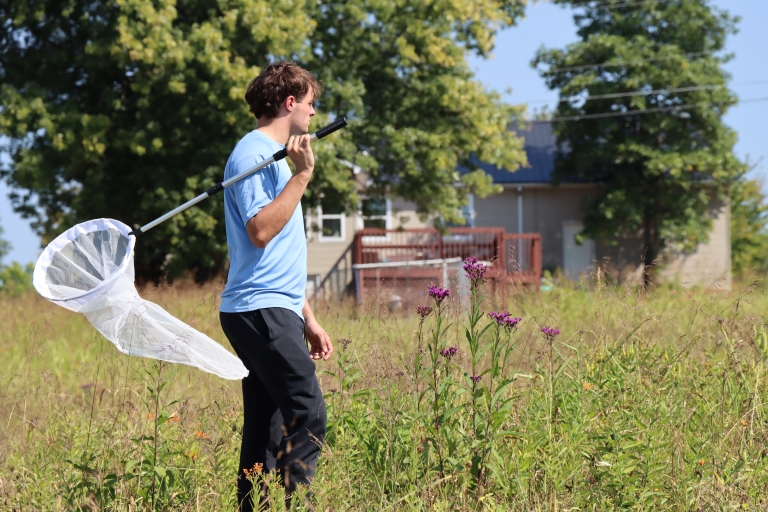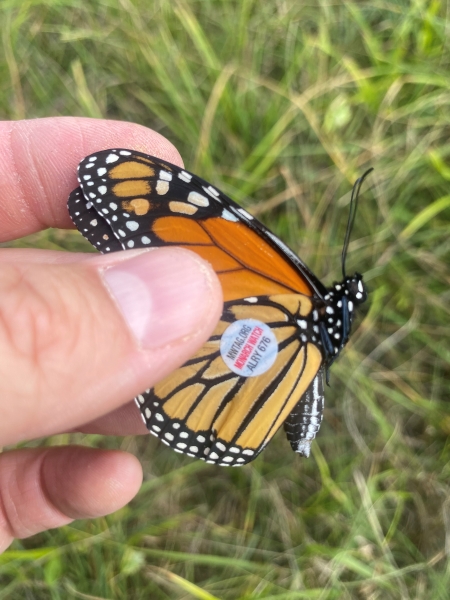
Human Ecology students tag Monarch butterflies during migration
Published on Oct 6, 2025
 Students in Human Ecology at Maysville Community and Technical College’s Maysville
Campus recently participated in Monarch Butterfly Tagging during the animal’s migration
period.
Students in Human Ecology at Maysville Community and Technical College’s Maysville
Campus recently participated in Monarch Butterfly Tagging during the animal’s migration
period.
For a couple of weeks in September, Monarch butterflies have been travelling south for the winter. According to Human Ecology Professor Justin Weiss, the population in North America migrates up to 3,000 miles each year to an area in Central Mexico, often referred to as the Monarch Biosphere Reserve.
“Monarchs are a beloved species by the public, with many people having memories of learning about butterfly life cycles using the Monarch as a model in grade school,” Weiss said. “In addition, people simply enjoy their presence in their flower gardens as they consume nectar for food.”
 Students in Weiss’ class were given specialized adhesive tags made by Monarch Watch
via the University of Kansas to participate in tagging. The tags were applied under
the wings and did not interfere with the creature’s ability to fly.
Students in Weiss’ class were given specialized adhesive tags made by Monarch Watch
via the University of Kansas to participate in tagging. The tags were applied under
the wings and did not interfere with the creature’s ability to fly.
With the tags, the butterflies can be tracked as they migrate to Mexico. Biologists will locate them and generate migration patterns based on the tags.
Throughout the migration period, students in the Human Ecology class caught, tagged, and released over 20 Monarch butterflies.
According to Weiss, the species has a declining population and has even been considered as a candidate for the Endangered Species Act for protection by the International Union for Conservation of Nature (IUCN).
“Awareness of a species and their plights, coupled with tangible solutions, are key to the conservation of organisms. If you want to help Monarchs, plant native milkweeds, and native wildflowers in your gardens and if you own land, keep some of that pasture wild so milkweed can grow,” Weiss said.
For more information on Human Ecology and other similar courses, please visit https://maysville.kctcs.edu.
